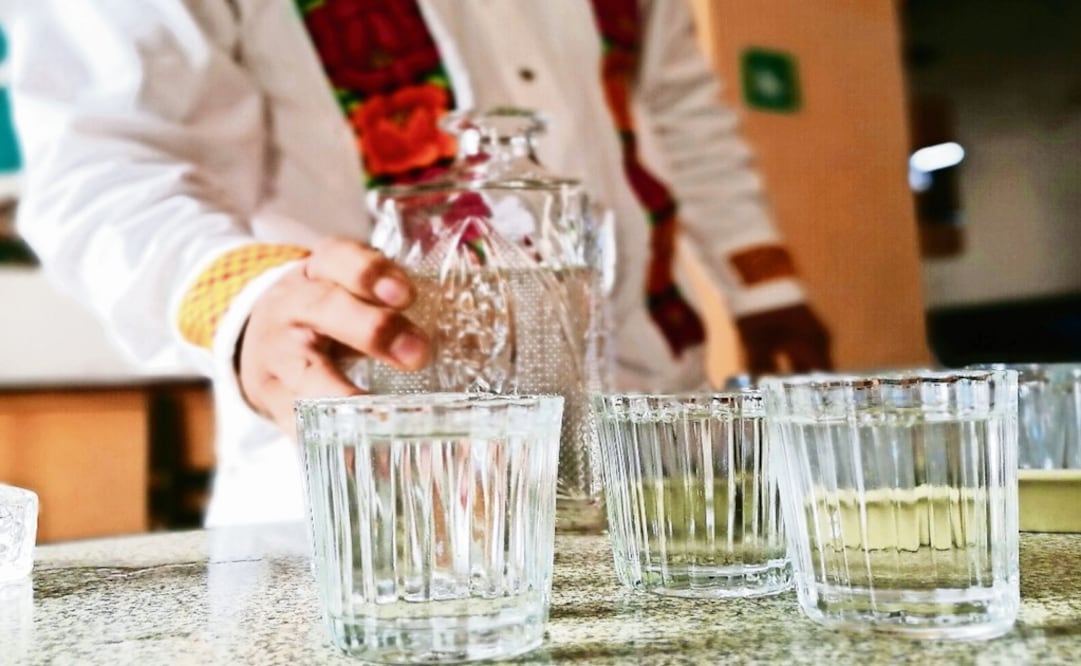Más Información

Entra en vigor incremento del 13% al salario mínimo general; Morena celebra año “de justicia social”

Ryan Wedding, el "Pablo Escobar moderno" ligado al Cártel de Sinaloa; el exatleta por el que ofrecen 15 millones de dólares

IMSS Bienestar da de alta a dos lesionados por descarrilamiento del Tren Interoceánico; cinco pacientes siguen hospitalizados

UNAM reconoce que 2025 estuvo “caracterizado por momentos complejos y difíciles”; va por fortalecer bienestar emocional
The mezcal de pechuga , the one that still has a historic taste from the native communities, is served only in special occasions, says Eduardo Ángeles Carreño . That is the tradition in Santa Catarina Minas, Oaxaca , where he was born and currently works.
If they serve you mezcal de pechuga , consider it an honor : he is pampering you. “We drink it on Día de Muertos , and during religious parties. I remember they opened it when they set up the altar, and its part of the ofrenda”, he says, while several people watch him prepare the mezcal .
The depth of the beverage goes beyond its taste: it's significant . To “compose” it, that is, to achieve a balance in it, can only be accomplished by someone with experience. Lalo learned from his father, Lorenzo Ángeles and from other wise people. The community recognized those who knew how to produce it, it gave them a certain status. “But unfortunately, mezcal is now one of the most adulterated and counterfeited beverages”, he says.
It's essential that it contains laying hen breast , without skin: “ Iguana, rabbit, or lamb : that's bullshit! We only use this bird, that's why its called mezcal de pechuga ”, he explains. Now, if someone tells you it is made out of “ agave breast ”, you must “run and tell your mom”, he jokes.
He knows what he's talking about: he knows mezcal since his mom rubbed it on his gums when he didn't even have teeth, as most of the children from the area. He's been a teacher, producer, and spokesperson for the farmers' mezcal, which is the opposite to trends or the voracious commercialism that is part of today's panorama.
Rice, cinnamon
, and local fruits such as apple and bananas , among other secrets, are essential to this recipe that implies several procedures, a lot of effort, and it's only produced from August to January. First, they cut the agaves to obtain the mezcal's foundation , in this case, from the tobasiche and espadín varieties , distilled twice, as usual.
The ingredients previously described, including the protein that in hanged inside the clay pot , which is an icon of the mezcales from this region, are infused three times; this is Lalo's only mezcal with those characteristics. Drop by drop, the spirit of those desired flavors impregnates this beverage that creates bonds between people and memory.
Lalo thinks that mezcal is similar to mole : there's seasoning, complexity, a ceremony . That's why it was rarely seen before, but now it is commercialized without knowledge or respect, sold to the highest bidder, at a high price. The innovation is acceptable: what is not, is fraud or false marketing. The market's demand grows, but you can't call something “ mezcal ” when it's not, it's not made with hen's breast, it didn't originate within the logic of the mezacalero environment.
To identify a good quality pechuga , it's necessary to learn where does it come from, know the maestro mezcalillero's name , and it must contain fruity and honey notes, as well as a higher viscosity in the mouth, and an alcohol level of 47.5 to 51 degrees.
In fact, the best would be for people could identify when they're drinking a tobasiche or tobalá , “If there are methods and rules in the wine culture, I don't know why this still doesn't happen when people taste mezcal from traditional agaves ”, he says.
The mezcal is a community . For Lalo and his family, this isn't an empty discourse: preserving these traditions also contributes to the local economy . The clay pot, machetes, blades, fermentation containers, petates , and copper pots for distillation producers are all part of the same chain.
“ Lalocura ” is not only his brand : Lalo cures hearts and minds. Tasting the dead's mezcal , that which is family and food , can't be compared to other experiences.
gm
Noticias según tus intereses
[Publicidad]
[Publicidad]











